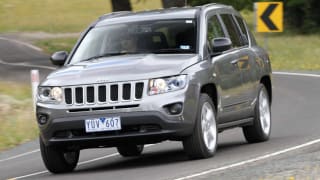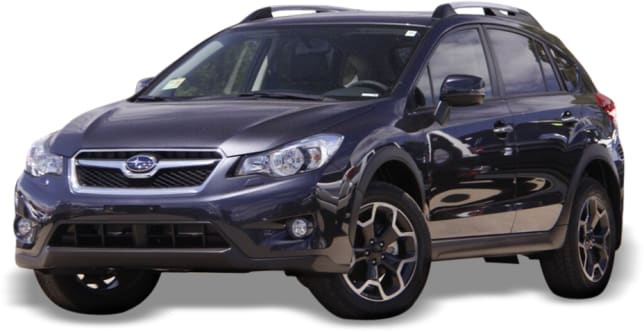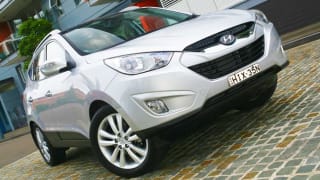Picking the eyes out of the car market has become an art form. Subaru is aiming to carve a niche in the cluttered compact SUV market with its latest XV.
Value
Priced from $28,490, it is a little bigger than a $4500 cheaper Impreza but shorter, wider, lower and $2500 cheaper than a Forester The engine is a new lighter-weight and longer-stroke version of Subaru's proven 2.0-litre flat four.
Explore the 2012 Subaru XV range
There are three models: 2.0 manual at $28,490 (CVT $30,990); 2.0i-L at $31,990 (CVT $34,990); and 2.0i-S at $34,490 (CVT $36,990).
Standard equipment includes seven airbags, a reversing camera, stability control, all-wheel drive, five-star crash rating, automatic airconditioning, cruise control, 17-inch alloy wheels with a temporary spare, engine stop/start on idle, a multi-function display, tilt and telescopic steering wheel, six-speaker single CD audio with Bluetooth, iPod and USB connection, fog lights and roof rails.
The 2.0i-L adds dual-zone climate control, voice-activated satellite navigation, a sunroof, privacy glass and a sliding centre console. The 2.0i-S adds leather trim, power driver's seat, heated front seats, high-intensity headlights, alloy pedals and indicators in the mirrors.
Technology
Outputs are unchanged at 110kW and 196Nm, but the peak power comes in at 6200rpm (200rpm lower) and peak torque at 4200rpm (1000rpm higher). Despite this higher torque peak, Subaru says the new engine has more pull in the low and middle-engine speed ranges.
The XV retains Subaru's signature permanent all-wheel drive system, unlike rivals that are either part-time four-wheel drive or front-wheel drive. Suspension tuning is as good as it gets in this class with agile and confident handling and a smooth, compliant ride over all surfaces.
Driving
It doesn't feel all that punchy on the road, especially in the manual. In the shortish lower gears, the engine sounds strained and needs at least 2500rpm on board to respond mid-range. However, it does cruise at a relaxed 2400rpm at 100km/h in sixth gear.
Not helping the driving experience is the notchy, long-throw gear shift. The test car also had a noticeable gear whine at 100km/h, not evident in the automatic. The CVT is $2500 more than the manual, but is nicer to drive and well worth the extra outlay.
And the characteristic slurring of the transmission is well disguised in normal use, flaring mostly under hard acceleration or in steep terrain. With a short wheelbase, high clearance and small overhangs front and rear, the XV will go places its rivals would shy from. It is exceptionally competent off-road, if the tracks are dry and not steep enough to warrant low range.
Thirst
With the help of engine stop/start on idle, fuel use is a combined 7.3L/100km with the six-speed manual and 7.0L/100km in the constantly variable transmission. On test, it averaged 7.4L/100km in the manual and 7.2L/100km in the CVT. Other efficiency tricks include variable timing on all valves and electric power steering in addition to the revised transmissions.
An information display monitors driving style and fuel use and compares it with previous results. It even shows the amount of fuel saved while stationary in engine stop mode. However, those who prefer tranquil motoring will find the engine's harsh cranking intrusive enough to disengage the stop/start function when idling, especially in the manual.
Design
Far from getting lost in the crowd, the XV stands out like a beacon. The XV slots in between the Impreza, on which it is based, and the larger Forester.
With big bumpers, bulging wheel arches, black alloy wheels, hawk-eye headlights and lairy colours, this pumped-up five-door hatch looks and feels almost armour-plated. Inside, the trim colour is sombre, but all the main controls are clear and easy to use and storage space is generous.
The front seats are supportive and spacious, forward vision is good, and seats are set high for easy entry and exit. Load space is tight and not helped by the high boot floor covering an inflated space-saver spare tyre.












